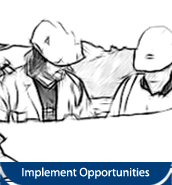
-
How ToBurner Optimisation

This guide is designed to complement the asphalt dryer burner toolbox talk. It focuses on:
- Why it makes sense to save energy on your dryer burner
- Practical steps to make your dryer burner more efficient
- Tools to help you plan and record

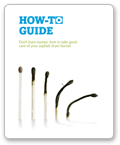 Burner Optimisation
Burner Optimisation -
How ToCompressed Air

This guide is designed to complement the compressed air toolbox talk. It focuses on:
- Why it makes sense to save energy on your compressed air system
- Practical steps to make your system more efficient
- Tools to help you plan and record

 Compressed Air
Compressed Air -
How ToEnergy Awareness

This guide is designed to complement the energy awareness toolbox talk. It focuses on:
- Why it makes sense to raise energy awareness on your site
- Practical steps to make energy saving something people talk and care about
- Tools to help you plan and record

 Energy Awareness
Energy Awareness -
How ToInsulation

This guide is designed to complement the insulation toolbox talk. It focuses on:
- Why it makes sense to save energy through good insulation
- Practical steps to reduce heat loss and insulate effectively
- Tools to help you plan and record

 Insulation
Insulation -
How ToMoisture Control

This guide is designed to complement the moisture control toolbox talk. It focuses on:
- Why it makes sense to control the moisture in your aggregate
- Practical steps to reduce moisture levels in your aggregate
- Tools to help you plan and record

 Moisture Control
Moisture Control -
How ToOptimise Site Running

This guide is designed to complement the toolbox talk on running your site at optimum efficiency. It focuses on:
- Why it makes sense to optimise your site
- Practical steps to make your site more efficient
- Tools to help you plan and record

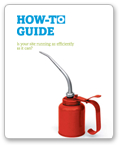 Optimise Site Running
Optimise Site Running -
How ToPumping

This guide is designed to complement the water pumping toolbox talk. It focuses on:
- Why it makes sense to save energy on pumping water
- Practical steps to make your site's water pumping system more efficient
- Tools to help you plan and record

 Pumping
Pumping -
How ToVSDs

This guide is designed to complement the motor speed toolbox talk. It focuses on:
- Why it makes sense to save energy by using variable speed drives, especially on fans
- Practical steps to make your fans more efficient
- Tools to help you plan and record

 VSDs
VSDs -
How ToEnergy Management

This guide is designed to complement the energy management toolbox talk. It focuses on:
- Why it makes sense to have energy saving targets
- Practical steps to create an energy reduction action plan
- Tools to help you plan and record

 Energy Management
Energy Management
-
Toolbox TalkBurner Optimisation
 Burner Optimisation
Burner Optimisation -
Toolbox TalkCompressed Air

Tips for using compressed air in a more efficient way to save up to 30% of your site's energy consumption.

 Compressed Air
Compressed Air -
Toolbox TalkEnergy Awareness

Tips for recognising and reducing energy consumption to save up to 10% of your site's energy consumption.

 Energy Awareness
Energy Awareness -
Toolbox TalkInsulation

Tips for ensuring that all appropriate site areas are insulated and save up to 10% of your site's heat load.

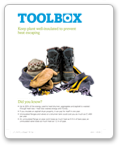 Insulation
Insulation -
Toolbox TalkMoisture Control

Tips for ensuring that moisture levels in aggregate are kept as low as possible to save up to 15% in energy consumption.

 Moisture Control
Moisture Control -
Toolbox TalkOptimised Site Running
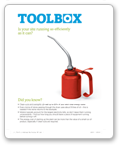 Optimised Site Running
Optimised Site Running -
Toolbox TalkPumping

Tips for ensuring your site's water pumps are running correctly and efficiently and save up to 50% of your pumping energy.

 Pumping
Pumping -
Toolbox TalkVSDs

Tips for identifying where Variable Speed Drives can be fitted or cheaper alternatives used to make significant savings.

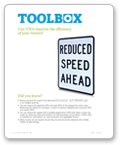 VSDs
VSDs -
Toolbox TalkEnergy Management
 Energy Management
Energy Management
-
Case StudyAsphalt Plant

This case study is an introduction to the energy saving measures that are possible at Asphalt Plants.

 Asphalt Plant
Asphalt Plant -
Case StudySand & Gravel Quarry
 Sand & Gravel Quarry
Sand & Gravel Quarry -
Case StudyCrushed Rock Quarry
 Crushed Rock Quarry
Crushed Rock Quarry
Find & Evaluate
An effective carbon and energy reduction scheme relies upon the specialist knowledge of those who use the equipment. Without new ideas from staff on how to cut energy consumption and carbon emissions it will be very difficult to make any savings. This journey stage reveals how important staff buy-in is to ensure the scheme's objectives are attained.
Several resources are available in this journey stage, such as Toolbox Talks on specific energy saving ideas and How-To Guides which are designed to be used after a 'Toolbox Talk', enabling staff to identify and evaluate carbon and energy reduction opportunities typically available in crushed rock quarries.
In addition, The Opportunities Database is available here: a spreadsheet tool where you can log and track carbon and energy cutting opportunities from their identification, right the way through to their implementation.
The value of some carbon and energy reduction ideas might be difficult to quantify, but The Opportunities Database makes it possible to evaluate their potential across the breadth of operations in quarries and asphalt plants.
Find & Evaluate
An effective carbon and energy reduction scheme relies upon the specialist knowledge of those who use the equipment. Without new ideas from staff on how to cut energy consumption and carbon emissions it will be very difficult to make any savings. This journey stage reveals how important staff buy-in is to ensure the scheme's objectives are attained.
Several resources are available in this journey stage, such as Toolbox Talks on specific energy saving ideas and How-To Guides which are designed to be used after a 'Toolbox Talk', enabling staff to identify and evaluate carbon and energy reduction opportunities typically available in sand and gravel quarries.
In addition, The Opportunities Database is available here: a spreadsheet tool where you can log and track carbon and energy cutting opportunities from their identification, right the way through to their implementation.
The value of some carbon and energy reduction ideas might be difficult to quantify, but The Opportunities Database makes it possible to evaluate their potential across the breadth of operations in quarries and asphalt plants.
Find & Evaluate
An effective carbon and energy reduction scheme relies upon the specialist knowledge of those who use the equipment. Without new ideas from staff on how to cut energy consumption and carbon emissions it will be very difficult to make any savings. This journey stage reveals how important staff buy-in is to ensure the scheme's objectives are attained.
Several resources are available in this journey stage, such as Toolbox Talks on specific energy saving ideas and How-To Guides which are designed to be used after a 'Toolbox Talk', enabling staff to identify and evaluate carbon and energy reduction opportunities typically available in asphalt plants.
In addition, The Opportunities Database is available here: a spreadsheet tool where you can log and track carbon and energy cutting opportunities from their identification, right the way through to their implementation.
The value of some carbon and energy reduction ideas might be difficult to quantify, but The Opportunities Database makes it possible to evaluate their potential across the breadth of operations in quarries and asphalt plants.




